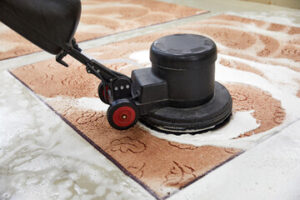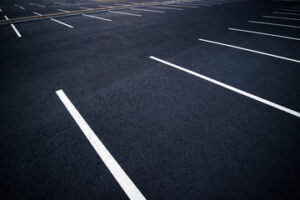Area rugs are great at hiding dirt deep within their fibers, and it’s often impossible to fully unsettle that yuck without a professional cleaning. This intensive method leaves rugs sanitized and fresh, while also preventing mold and mildew.

Before cleaning a rug, make sure to test for colorfastness. This can be done by spraying a hidden area until wet and blotting it. Call Rug Cleaning El Dorado Hills CA for trusted advice.
Rugs trap dirt and bacteria within their fibers, causing odors and contributing to long-term health issues. Over time, this grime can also cause rug discoloration, and regular vacuuming or over-the-counter cleaners only remove a small amount at a time.
A good rule of thumb is to clean your rug every three to five years, depending on its location and use. The best way to tell if your rug needs cleaning is by running a white rag across the surface of the rug, and if it comes up dirty you need to wash it. You can also test the colorfastness of your rug by dabbing a small spot with your cleaner and then blotting it to see if colors run.
Some stains, such as pet accidents and vomit, can be difficult to clean. If your rug has been stained by these substances it is important to work on the stain as quickly as possible to reduce its impact. If your rug is made of natural materials, such as wool or cotton, it can be washed in a washing machine with cold water and mild detergent. If you are using a liquid detergent, always test a small area to make sure the color does not bleed. If your rug is synthetic, you can wash it in a washing machine with hot water and a detergent that is suitable for the type of fabric.
If you have a larger, thicker rug that can’t be washed in the home, consider a professional rug cleaner that uses the hot-water extraction method for thorough cleaning. This process works by injecting hot water and cleaning solution into the rug, and then extracting it along with dirt and contaminants. This technique leaves the rug with minimal moisture, which allows it to dry faster than traditional methods.
In addition to the hot-water extraction method, some rugs can be cleaned with a process called “encapsulation.” This technique applies a coating to the rugs that binds to and encapsulates dust particles so they are unable to circulate in the air or become embedded in other types of fabrics. This helps prevent the build-up of dust mites, which can lead to allergies, asthma, and other respiratory conditions.
Allergens and Insects
Many rug owners are unaware that the fibers of their rugs contain allergens that may impact allergy sufferers. Allergens in rugs can be dust mites, cockroach droppings, pet dander and other pests, dried spills or odors, and even bacteria and viruses. These contaminates can cause various health issues, such as sinus and nasal congestion, sneezing, rashes and other skin irritations and even asthma flare-ups.
Odors can also be problematic, especially if they are a result of pet urine, smoke, skunk or tear gas. Urine stains can be particularly stubborn and must be thoroughly cleaned to eliminate the odor and prevent the spread of mold, mildew, and other health problems. Smoke, skunk and tear gas odors can be removed with proper anti-fungal treatment and a thorough cleaning of the rug.
Mold, mildew and other fungal growths in rugs can also be problematic, causing a musty odor and degrading the rug. Fungus can often be stopped from growing in a rug with proper vacuuming, regular professional cleanings, and by keeping the rug dry at all times.
Another common issue affecting both new and old rugs is color fade. The sun’s rays can cause colors to fade over time, resulting in a dulling of the original vibrant shades. This can be remedied with proper care, including regular and thorough vacuuming, rotation of the rug to minimize sun exposure and professional cleanings at the recommended intervals by the rug manufacturer.
Other elements that affect a rug’s appearance include the onset of color bleeding, nap reversal and shading. These can often be caused by the use of water soluble dyes in cheaper rugs and carpeting, which are not able to stand up to rigorous cleaning. The best way to minimize the occurrence of these conditions is to purchase only high quality rugs, and to maintain them properly. This means regular and thorough vacuuming with a high quality attachment, regular rotation to avoid sun fading, removing shoes at the door, and promptly cleaning up any spills or stains to minimize the occurrence of permanent damage to the fibers.
Long-Term Health Issues
On a weekly basis I get technical help requests from rug cleaners and insurance case help requests from adjusters for damaged rugs that were improperly cleaned or stored. These rugs have either been exposed to harsh commercial rug cleaning solutions or have been subjected to long-term exposure in the home to moisture, causing fiber breakdown, dye fade and other forms of permanent damage.
Dirty rugs are breeding grounds for bacteria colonies, chemical irritants, microscopic mites, and microorganisms like mold. These organisms release harmful fumes into the air you breathe and can cause short-term and long-term health issues.
Rugs and carpets trap allergens like dust, pet dander, and mold spores that are the triggers for allergy attacks. These allergens exacerbate existing health problems like hay fever, asthma and other respiratory disorders. Regular rug cleaning reduces these allergens to improve indoor air quality, a key component in good family health.
Allergens in dirty rugs also trigger skin rashes, itching and itchy eyes. Some people suffer from more severe allergic reactions, including sneezing and nasal congestion. In addition to the physical irritation, allergies cause stress which makes your immune system weaker and increases your chances of getting sick with infections like colds, flu and bronchitis.
The rugs that are subjected to long-term exposure in homes often develop serious moth and carpet beetle infestations. These pests eat the wool face fibers as well as the foundation warps and wefts of the rug. The resulting holes leave the rug with a grey look and are often unusable. If a rug is infested with moths or carpet beetles, it should be treated for the pests BEFORE it is washed. Using a deep freezer to essentially “crack” the bugs and kill them will often work, although it does add to the cost of the rug cleaning.
Many natural fiber rugs such as silk, wool and jute, are mothproofed with formaldehyde or other volatile organic compounds (VOCs). These VOCs can pollute your air, contribute to eye irritation, headaches, breathing distress, and possibly even reproductive and neurological problems. Check for certifications on the rugs you buy that indicate they have fewer or no VOCs.
Extend the Life of Your Rug
Rugs are beautiful accessories that add warmth and color to a room. Whether it’s a Persian, Oriental, or synthetic rug, proper care is essential to prolonging its lifespan. Rugs are susceptible to heavy foot traffic, spillages, and direct sunlight which can cause wear and tear over time. Regular cleaning helps remove dirt particles that, if left unchecked, damage fibers. Proper care practices such as vacuuming regularly, addressing spills immediately, and rotating rugs annually help extend the life of your rug.
Regular rug cleaning can significantly reduce the amount of dust mites and other allergens in your home. This creates a healthy environment for family members, especially young children and the elderly, by removing environmental irritants that can contribute to a variety of health issues. Keeping your rug clean can also restore its softness that diminishes over time with normal use, making it more comfortable to walk on.
Preventative rug cleaning is the most effective way to extend the life of your rugs. Daily vacuuming removes the majority of dirt particles before they can settle into the fibers and cause wear. Promptly treating stains with a cleaning solution for the specific fabric type prevents them from setting in and becoming harder to remove later.
Choosing cleaning products that are safe for your rug’s material prevents chemical degradation over time and keeps your rugs looking beautiful for years to come. Professional cleaners are experienced in identifying different rug materials and will choose appropriate cleaning methods to preserve your rugs.
The benefits of a regularly cleaned area rug are numerous and well worth the investment. If you are hesitant to have your rug cleaned, consider the cost of replacing an expensive area rug that is not properly maintained. Professional carpet and rug cleaners like

